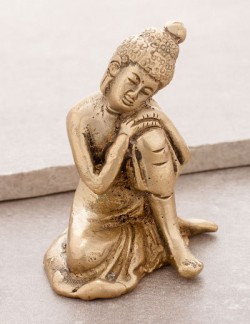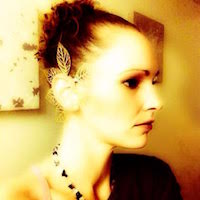Celebrations for the Hindu Festival of Holi are now underway. Holi is an ancient Hindu spring celebration, also known as the festival of color or the festival of sharing love.
The two-day celebration begins on the day of the full moon, known in Hindu as Purnima, which falls somewhere between the end of February and mid-March according to the Gregorian calendar with which most of us are familiar.
This year, the celebration begins on March 23rd and continues throughout the day of the 24th.
Since we have officially welcomed spring, a time of beauty, blooming, growth, love and intimacy, and since the March eclipse revolves around relationships, healing and communication, I thought outlining a festival of love from another culture would be perfectly fitting.
The festival itself has become popular among non-Hindus, but it is primarily observed as a Hindu celebration in India and Nepal, as well as some other regions of the world where large Hindu populations exist.
In recent years, Holi—or festivities similar to it—have also spread to Europe and parts of North America. In researching the festival, I immediately thought of the “color runs,” or “color vibe runs,” where spectators throw colored powder on participating runners.
Holi is known as a day to rid oneself of past errors, meet others, end conflicts, heal relationships and forgive and forget. People pay and forgive debts and grievances and start anew with clean slates. It is a time of laughter, joy, play and lightheartedness. The festival also signifies the end of winter and the arrival of spring and is celebrated as a thanksgiving for harvests yielded.
The first day of festivities is referred to as Holika Dahan or Chhoti Holi. The celebration usually begins at or just after sunset with the lighting of the Holika bonfire. People gather together, sing, dance and party around the fires. The fires themselves symbolize the victory of good over evil according to the ancient Hindu legend behind the festival.
The word “Holi” is derived from “Holika,” who was the evil sister of demon king Hiranyakashipu.
According to ancient legend, the king had earned such material wealth that he became virtually indestructible. He was extremely arrogant and grew to think of himself as God, and he demanded that everyone worship him. However, his son, Prahlada, disagreed with his father and remained devoted to Lord Vishnu, who is considered a supreme God in Hindu religion.
The king was infuriated, and he subjected his son to cruel punishments, but none affected the young Prahlada’s resolve. Evetually, Holika, Prahlada’s aunt, tricked him into sitting on a pyre with her. Holika wore a cloak that would protect her from the fire, while Prahlada did not.
As the fire began to burn and build, the cloak flew from Holika and encased Prahlada instead. The young man survived while his aunt burned to death. Angry over the turn of events, the king smashed a pillar with his mace, and Lord Vishnu appeared as Lord Narasimha and killed Hiranyakashipu.
The day after, once the fire had cooled, the people smeared ash on their foreheads, and eventually water and dyes came to be incorporated.
The second day of celebration is referred to as Rangwali Holi, Dhuleti, Dhulandi or Dhulivandan. This is a day of pure enjoyment; there is no prayer, as the day is reserved for partying, food, drink and company. Everyone gathers together for play with colors. Young or old, rich or poor, the masses arm themselves with water guns and water balloons, colored powder, water, mud and even perishables such as eggs—basically anything they can get their hands on and throw at someone—and everyone sets to work decorating each other in a rainbow of colors.
Once the play has come to a close, everyone heads home to wash up, sober up and bathe. In the evening hours, it is time to head out to join friends and family once again for more food, conversations and gathering.
The festival encompasses forgiveness, love, friendship and compassion, which are all things we need much more of in today’s society.
I find myself reflecting upon the fire, and the story of Holika. There seems to be a lot of competing, and sometimes biased and judgmental, information circulating, especially surrounding religion and cultures from the East.
While researching for this article, I had to check with a dear friend of mine—who is of Eastern descent and lives in India—to verify that the information I had gathered was correct, and indeed, several tidbits with negative connotations were in fact untrue.
These false ideas and preconceived notions can and will prevent us from connecting and bonding with those who could potentially be wonderful friends, and in some cases, even lovers might be missed as we pass judgement without ever exploring a person first-hand.
Much like the cloak that Holika wore, we might think that our own judgements and ideas are right or superior, and our turning away an act of self-protection, when in reality we are only hurting ourselves and others and missing out on opportunities to love more openly and freely.
So, in honor of Holi and the season of love and growth, do yourself and the world a favor and go out and strike up a conversation with an individual you may not normally approach. It can be anyone—the man or woman covered in tattoos, or the young mother down the street you assume to be negligent—but start a conversation that honors you both and seeks to restore balance and truth.
Let’s embrace more love and work to erase the evil that has manifested here in our society as separation and misunderstanding, and what better way than to celebrate joyfully while placing a focus on love and understanding.
~
Relephant Read:
The Pros & Cons of Holi Festival.
~
Relephant offering from our mindful, eco, ethical Elephant Market:
LITTLE BUDDHA STATUE $29

Author: Amanda Dobby
Editor: Toby Israel
Image: julian correa/Flickr // julian correa/Flickr
~







Read 2 comments and reply